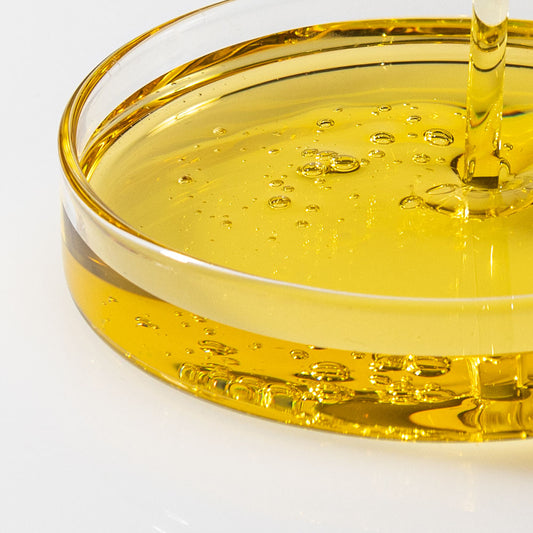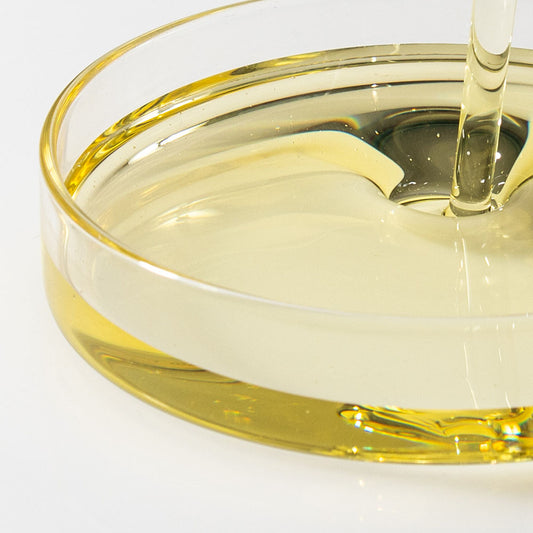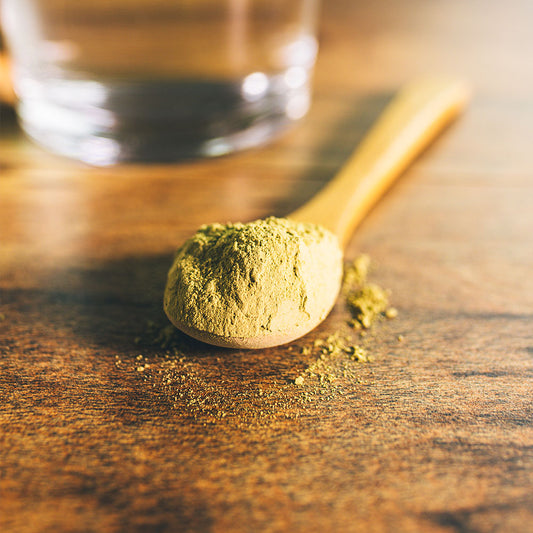My faithful canine companion Raja, the true author of this blog and named by Dr. Vasant Lad, is a wise being that has opened my eyes to the world of canine Ayurveda. True to his name, which means King, he is regal indeed, “a divine being” as many have called him. And it is through his divine transmission that I have seen Ayurveda come to light and life in a whole new way.
Let's begin with the doshas: vata, pitta, and kapha. All dogs align with Ayurveda's prakruti/vikruti paradigm. No doubt about that. It's more than personality. There are ways to assess overall bone, physique, muscle, stamina, fascial features, and so forth, to derive inherent doshic characteristics and features of your dog. Though I am not a veterinarian and I've not created a formal animal dosha test, most of us can easily figure it out through observation (trividhya pariksha).
Doshic Profiles
In General:
Vata dogs are high energy and alert. They need daily activity, stimulation, fun, and play. They will tend toward anxiety and sensitivity. They are sprinters, can tire easily even with tons of energy and are picky and light eaters. They should have a tall or thin frame and even irregular features in face, feet, and tail. Some examples: Greyhounds, Dalmatian, Poodles, some Terrier breeds.
Pitta dogs are great protectors, smart, and sharp. They can tend to be aggressive or territorial and are athletic and easily trained. They are often service dogs and movie dogs, and agility training is where they thrive. Pitta dogs have well defined muscles and bone features, and they will be competitive in training situations. Some examples: German Shepherd, Doberman, Rottweiler.
Kapha dogs are the ones you love to cuddle and are loyal and attached. They are slow and easy going, strong, and stubborn. These dogs love to lay around and be with people, catching the food crumbs. They can tend toward separation anxiety and excess weight and are good work dogs. Some examples: St. Bernard, Bassett Hound, Bernese Mountain Dogs.

Pulse
As always in Ayurveda, when we think of personal constitution (prakruti) we come to pulse. Can you take your dog's pulse? Yes, so I have been told and shown. If you are a versed, skilled in Ayurveda clinician, you can easily assess your dog's pulse. Just transfer the knowledge of human pulse characteristics to that of the dog's posterior femoral pulse. To feel the pulse, your dog would be on its backside, belly side up. Place 3 fingers along the pulse from its root down the leg. Feel for the qualities, spikes, and rhythm. At best, I would encourage you to rub your dog's belly and find your way to feel for the artery along the back leg, coming from the hip. Take your index, middle, and ring finger tips along that artery and feel the pulse beat within the vessel. Just observe how the pulse moves along those three fingers.
In General:
Vata pulse will feel quick, light, like a snake, and can shift or change easily.
Pitta pulse is robust, jumps to you like a frog, and feels sharp.
Kapha pulse is broad and swims like a swan, slow and steady.
Now that we've covered general Ayurvedic doshic assessment, let's support our furry friends as they navigate domesticated living. In nature, animals generally know how to shift, adapt, and tend to their natural instincts to stay balanced and happy. Ayurveda teaches and acknowledges that understanding animal life is important to our well-being. So when we domesticate the “wild,” together we surf the natural instinctual flow. Observing Raja has undoubtedly expanded and elevated my Ayurvedic wisdom.
Diet
Let's move to diet. In Ayurveda, what, how, and when we eat are of paramount importance. The health of the digestive tract and the process of digestion is revered in Ayurveda. Many can argue that a healthy digestive system will always support doshic balance. Thus, one of the most profound, immediate, and best ways to stay strong and balanced is to monitor dietary intake and ability to digest whatever we eat.
What should dogs eat? The answer can be varied and I have heard of vegetarian dogs that thrive. However, I decided to research and query this question for me and Raja. In general, the natural diet of wild canines is meat. They prefer to prey on animals for food because they are huge carnivores. Thus, evolutionarily, their stomachs were not developed to easily digest grains. They eat a few vegetables and grasses from the wild or from the stomach contents of their prey. Ok so that is gruesome! Do not want to think of Raja that way. But it is information, nonetheless, and helpful for me when I go in search of the perfect dog food for the King.
I also take into consideration the location, season, age, and constitution of Mr. Raja in the selection process. I will confess that this is still being refined, for various reasons, as we navigate his life flow. Given these variables, what immediately became obvious for me was that I can NOT be feeding Raja the same dog food all year long! His food and proportions will need to change accordingly.
Food Considerations
| Vata | Pitta | Kapha | |
| Eating Behavior | Quick, fast, sensitive digestion, nervous eater, needs calm to eat, will leave food half eaten or on floor. | Needs regular meal times, no touching food bowl, eats with purpose, no sharing bones, etc. Can digest anything. | Easily skip meals, will eat, sometimes slowly, motivated by food generally. Follows food. |
| Season | Digestion will change in fall, winter season. Give good fats like duck. In summer time digestion slows down so give easy to digest meats like rabbit. Could do 3 meals per day. | Winter strongest digestion and will crave heavy meats like bison. Can increase portion size. In summer, slow digestion and energy goes down when hot. Lots of water in summer. | Fall season digestion is usually strongest and it slowly diminishes into the summer season. Easily skip a meal in the summer. Eat 25% less in summer. Some dogs do better with 1 meal per day at noon time. |
| Meats | chicken, buffalo, seafood, duck | buffalo, rabbit, venison, turkey | chicken, venison, rabbit |
| Age | Increase fatty meats in older years, give joint supplementation. Watch for constipated stools. | Will have good digestion most of the time. Give blood support and liver support. Avoid over feeding. | Will love to eat as puppies, doesn't transfer into adult living. Will age gracefully. Keep blood fatty free with cholesterol busters. |
Do not combine raw meat with dry or dehydrated food—it derails agni's efforts in digestion when food is combined the wrong way. It is best for dogs to eat raw alone. Often you can feed dry food as first meal and raw meat as second meal. They will tend to eat less and need a smaller portion size in the summer and can be fed more in the winter. I've seen this change time and time again. Raja simply won't eat if he is not hungry or if I have fed him too much.
Routine
Lifestyle? Well a dog's life is…Routine is of prime importance to dogs. They prefer routine and don't like it very much when you change things up. With that said, pitta dogs will enjoy routine most, while kapha dogs simply do not like change and will resist it. Vata dogs will waiver to the moment at hand. However, in general, dogs enjoy routine living. It grounds their mind as they cannot filter judgement, discernment, and causal thinking like the human mind. Not that we are superior, we are different.
In general, dogs are social beings and need physical activity. Daily walking is a must and this is one of the many health benefits of having a dog. Even if you have a large backyard where they can roam free, daily walking for a dog with its owner is important. And Ayurveda recommends that, as part of our daily routine practices, we sweat and exercise (vyama) as well.
Time of Year
Seasonally, dogs will have lower stamina in the summer and greater strength and stamina in the winter. Take shorter walks and hikes in the summer, during the cooler times of the day. Climb the mountain in the winter. Dogs will love sitting under the tree, belly to the cool earth, when hot. They immediately look to cool their vital organs. Monitor their stamina and body heat.
Last summer, I thought Raja was developing a heart or pulmonary condition because he tired so easily and so quickly all the time. I thought about getting him tested but held off. I left for India, but closely monitored him. I returned in the fall (November), and his energy was back. His physical activity and stamina all came back. I learned that during the hot time of the year, strength leaves the body (agni) so we don't overheat, but increases in the winter to protect the body and maintain vigor.

Remedies
We know that following constitutional guidelines regarding age, season, diet, and lifestyle, is Ayurveda's claim to fame. Thus, many home remedies are effective when our dogs get into trouble. Here are some of my favorites (again, I am not a veterinarian):
Garlic sesame oil
Some dog's ears need more cleaning than others. One or two drops, depending, can be very supportive to fussy ears. For general health maintenance, you can apply 3 times per year or monthly, depending on the dog. I have personally (and others I know) used this to keep ears healthy when challenged.
Powdered turmeric and honey
Mixed together it's a great way to support a healthy inflammatory response. You can also mix in neem, goldenseal, and ginger to support a healthy immune system. I used a similar mixture to calm persistent coughing. Regardless, if Mr. Raja gets some sniffles, he is having a tiny ⅛ teaspoon of honey and herbs.
Oils
Believe it or not, I've been warned to not give ghee to dogs. A tiny bit occasionally is okay but they should get most of their fats from their diet (no surprise). Certain dogs may need to supplement. Sunflower, and safflower oils are good tridoshic choices, and herring and salmon oil are great for vata canine bodies.
Ashwagandha
An herbal extract like ashwagandha is useful when there is going to be something that will be disturbing to your dog's nervous system, like change, travel, or thunderstorms. There are many herbal tinctures on the market for canine nerve support. I just happen to want to share supplements with my buddy. I like the liquid extracts because they are quick and easy to administer. Usually 1 drop per 10 pounds or so. This is an estimate based on no criteria but my own. Two drops for Raja, one dropper full for me!
First Aid
(Topical) Powdered turmeric poured on top of a cut or scrape will clean the area and support the healing process. Make a paste with water—they generally won't try to lick it off as it has a very bitter taste. It can be challenging to apply oil to their skin, and essential oils can often be too strong and should be used with caution. The bitter paste of neem or turmeric can work well. Sometimes, on a healing wound (with stiches), you can try the powder and they should be less likely to lick it off. Caution: You don't want your dog ingesting a bunch of turmeric and neem! Be sure they leave it alone if you apply it. Turmeric will leave their skin yellow but they don't mind.
May this article be a springboard to explore and share Ayurveda with your canine friend. It's always a good idea to check with your veterinarian before embarking on an herbal protocol. Both your dog and Ayurveda have much to teach and expand our awareness on how to live in rhythm with the pulse of life. Ayur Woof!









